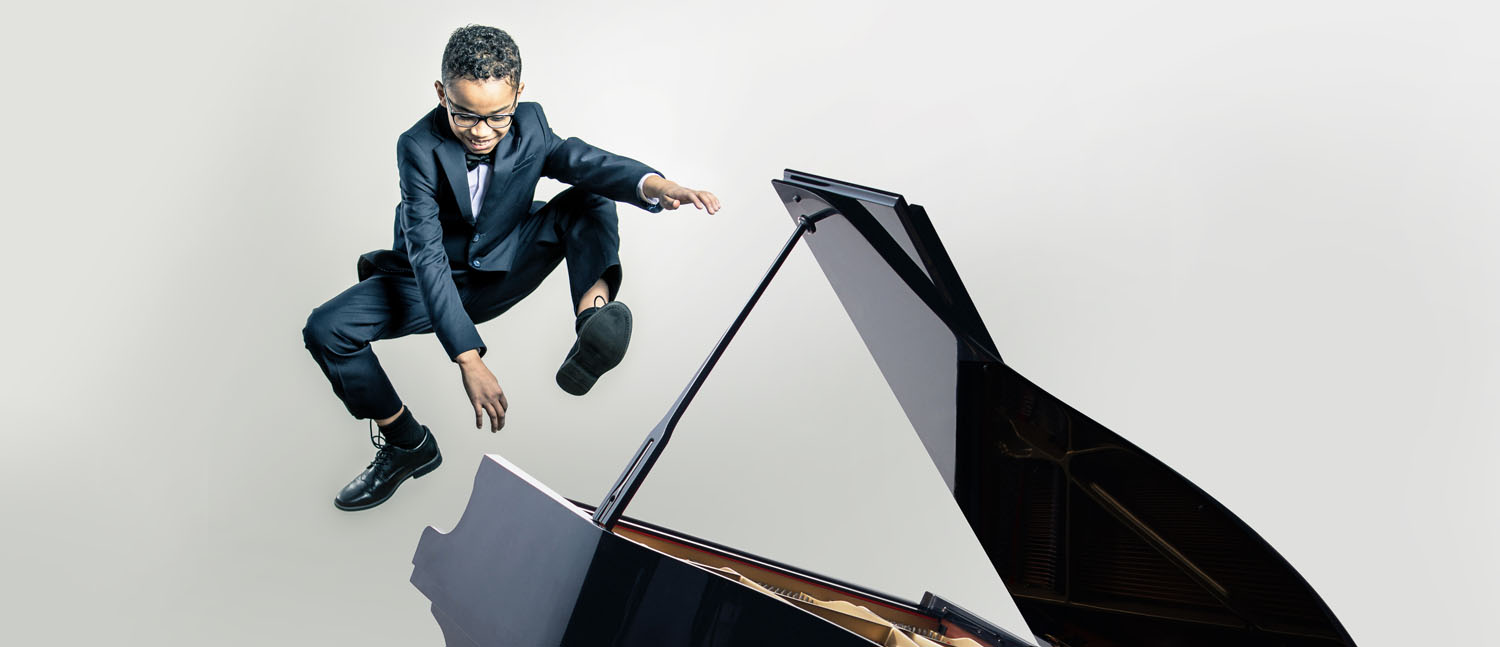Category I - born after 4 Nov. 2009
First Round
a) J. S. Bach: three pieces from Kleine Präludien und Fughetten
or two three-part Inventions (Sinfonias), BWV 787 - 801
or three consecutive movements from a French Suite, BWV 812 - 817
or D. Scarlatti: two Sonatas
b) C. Czerny: one etude from op. 299, no. 21 onwards (book 3 and 4) or op. 335 or op. 740
c) F. Liszt: one etude from Études pour le piano en douze exercices (Jugend-Etüden op. 1) excluding nos. 1 and 4
or from Grandes Études de Paganini, no. 4 or no. 5
d) J. Haydn: one sonata-allegro movement from a piano sonata
or L. v. Beethoven: sonata-allegro movement from op. 2/1, op.10/1 or 2, op. 13, op. 14/1 or 2, op. 49/1 or 2, or op. 79
Length of playing: 15 - 20 minutes in which repeats may be played.
Second Round
a) a chamber music performance performed together with musicians appointed by the competition:
W.A. Mozart: Piano Trio in G major, KV 564, 1st movement
or a piece composed by the candidate him/herself (For piano solo, the music must be handed to the jury)
or one improvised piece for which the candidate will be given a choice of themes
b) one or more pieces by E. Grieg, F. Mendelssohn Bartholdy, R. Schumann or P. I. Tschaikowsky
Arrangements can be permitted on request.
c) F. Liszt: one or more pieces from Consolations
orNocturnes (Liebesträume)
or Valse-Impromptu
orAnnées de Pèlerinage I – Suisse (excluding nos. 5 and 6)
d) B. Bartók: one or more pieces of candidates' own choice
Length of playing: 25 - 30 minutes in which repeats may be played.
Third Round
J. Haydn: Piano Concerto in D major, Hob. XVIII:11 (1782)
Contestants up to 10 years of age may choose to perform one movement (the 1st or 3rd) of the concerto.
Together with the orchestra of the Musikgymnasium Schloss Belvedere
Category II - born from 4 Nov. 2009 to 5 Nov. 2005
First Round
a) J. S. Bach: one Prelude and Fugue from the Well-Tempered Clavier 1 or 2
or three consecutive movements from a Partita, BWV 825-830
or three consecutive movements from an English Suite, BWV 806 - 811
or D. Scarlatti: two Sonatas
b) F. Liszt: one etude from Grandes Études de Paganini, excluding no 4 and no 5
or from Three Concert Etudes: no. 2 or no. 3
or from Two Concert Etudes: Waldesrauschen or Gnomenreigen
c) F. Chopin: one virtuoso etude from Études op. 10 or op. 25
d) B. Bartók: one or more pieces of candidates’ own choice
Length of playing: A maximum of 20 minutes in which repeats may be played.
Second Round
a) a chamber music performance performed together with musicians appointed by the competition:
F. Mendelssohn Bartholdy: Piano trio no. 1 in d minor, op. 49, 1st movement
or a piece composed by the candidate him/herself (For piano solo, the music must be handed to the jury)
or one improvised piece for which the candidate will be given a choice of themes
b) L. v. Beethoven: one of the 2 or 3 movement sonatas (except op. 49, op. 53, op. 57, op. 101, op. 106, op. 109, op. 110, op. 111)
or F. Schubert: one of the following sonatas: op. 120 A major (D 664) or
op. 143 a minor (D 784) or op. 164 a minor (D 537)
c) F. Liszt: one work from: Ballades
orHungarian Rhapsodies
orTwo Polonaises
or Années de pèlerinage I – Suisse: no. 5 or no. 6
orAnnées de pèlerinage II– Italie: Book 1 (excluding no. 7) and Book 2
d) one work for piano solo composed after 1950, also an own composition by the candidate is possible
(Works for which a preparation of the piano is necessary will not be admitted, sheet music must be submitted to the jury)
Length of playing: 35 - 40 minutes in which repeats may be played.
Third Round
E. Grieg*: Piano Concerto in A minor, op 16
Together with the orchestra of the Musikgymnasium Schloss Belvedere
* Instead of Franz Liszt's Piano Concertos or Dance of Death, the finalists of the Liszt Competition in Category II are asked to interpret Edvard Grieg's Piano Concerto in A minor op. 16. It is historically attested that Franz Liszt himself was more than taken with Grieg's concerto. When Grieg met his patron and friend Liszt in 1870 during a study visit to Rome, he showed him the score of the piano concerto, which had been premiered in Copenhagen in 1869. Liszt's request to play the concerto for him on the piano was rejected by Grieg, who pointed to a lack of practice. Franz Liszt then grabbed the score, played it at sight with a light hand and nodded at the passages that particularly pleased him. Afterwards, he suggested improvements to the young Grieg's orchestration. Shortly before the end of the third movement, Liszt is said to have jumped up, sung the theme and shouted: "G, G, not g-sharp! Famos!" To Grieg's delight, his patron also showed his unconcealed enthusiasm for other harmonic turns and finesses.
